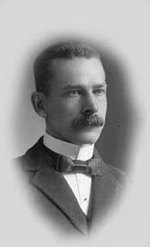
Manuscript Collection Finding Aid
"Manuscript" collections in the State Archives refer to all unpublished materials received from non-government sources. These materials include letters, diaries, and scrapbooks of individual's, family papers, and minutes, reports, and correspondence files of businesses and organizations. Photographs, sound and video recordings, and other media are found in many collections.
Doane Robinson Collection
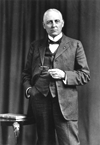
Doane Robinson Collection - SDDA
Alphabetical Topic Correspondence
"The Pull of the Historic Place"
Jonah Leroy (Doane) Robinson (1856-1946) was secretary of the South Dakota State Historical Society and superintendent of the State Department of History from 1901 to 1926. As superintendent of the Department of History, he served as head of the state library, vital statistics bureau, and legislative reference division. He also collected the items, which formed the basis for the Robinson Museum, and the state Portrait Gallery. In his official capacities, Robinson collected and published historical, economic, and census information.
The Doane Robinson Papers consist of correspondence, manuscripts, poetry, genealogical data, census and related statistics, and miscellaneous papers. Robinson's personal papers can not be separated from his official papers. The correspondence files, as well as the research and manuscript files, contain both Department of History business with personal affairs.
The organization of these papers is complicated and should be thoroughly understood before the collection is used. Robinson's letters remained after he left the Department of History in 1926. Many letters and manuscripts were disseminated into the library's shelves and others became vertical file material. A large portion of the his correspondence remains intact in this collection, but much of the correspondence was filed in Department of History files. Finally, one large box of correspondence was stored in a back room, out of sight for many years.
To further complicate matters, Robinson continued to work with his historical data after retiring. In fact, he took over the Department of History again briefly in 1946. His papers from this twenty-year period are also included in the collection. In the 80 years since Robinson's retirement, and the 60 years since his death, this mass of material has been filed and refiled so many times that it has totally lost its original organizational structure.
The attempt to make this collection as useful as possible while recognizing "original order" has resulted in a somewhat awkward arrangement. This pertains especially to the correspondence files. Files have been kept, whenever possible, in the format in which they were found when the collection was processed. Consequently, some general correspondence files are arranged chronologically. But the greater part of the correspondence is filed alphabetically, either by name of correspondent, or by subject.
Mary Collins Collection
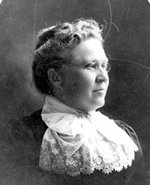 Collection
CollectionMary Collins was born in Upper Alton, IL on April 18, 1846. Her family later moved to Keokuk, IA; there Mary became a member of Keokuk's 1st Congregational Church. She received a Masters Degree from Ripon College and taught school in Keokuk for three years. In 1875, Mary began her mission work in Dakota Territory with Reverend and Mrs. Thomas L. Riggs at the Oahe Mission near Ft. Sully. She was both teacher and social worker and quickly learned the Lakota dialect of the Sioux language.
In December 1885, Mary began her own mission work at Little Eagle on the Standing Rock Reservation. Mary was quickly admired by the population of Little Eagle, earning the Sioux name "Winona" which means princess. Her gifts as preacher, teacher, and doctor were invaluable on the reservation. Mary was known as a friend of the Indians. She later became acquainted with Sitting Bull, who adopted her into his tribe. Mary was ordained as a minister of the Congregational Church in October of 1899, allowing her to conduct religious ceremonies such as marriages, baptisms, and funerals. Mary returned to Keokuk, IA in 1910 to live with her sister. She lived in Iowa until her death on May 25, 1920.
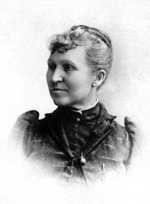 Mary's personal papers contain genealogical material, Collins' autobiography in her own hand, ordination papers, her will, and a certificate appointing her postmaster. The correspondence is most extensive for the 1880s and 1900s. Most of it is family and mission-related. Prominent correspondents are with the American Missionary Association, the Department of the Interior (Indian Service), and the Indian Rights Association.
Mary's personal papers contain genealogical material, Collins' autobiography in her own hand, ordination papers, her will, and a certificate appointing her postmaster. The correspondence is most extensive for the 1880s and 1900s. Most of it is family and mission-related. Prominent correspondents are with the American Missionary Association, the Department of the Interior (Indian Service), and the Indian Rights Association.
Several writings by Collins, in both English and Dakota, can be found under "Mission Work and Indians." Also includes an account book for the Elk Butte Women's Society, pamphlets, photographs, an American Missionary Association Indian Missions record book and a list of Indian names with their English translations. Other correspondence included is that of Ethel Collins Jacobsen, a niece to Mary. The material on Elias and Ethel Jacobsen consists of Ethel's correspondence with her family, 1887-1898, 1933, 1937, some writings, and a sporadic diary; and Elias's diaries for 1875-1885.
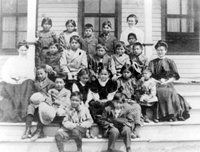 The Mary Collins collection offers a vast array of primary source materials. Individuals interested in early Native American, Women Missionary, and Dakota Territory history will find Mary's correspondence very useful for their researching needs.
The Mary Collins collection offers a vast array of primary source materials. Individuals interested in early Native American, Women Missionary, and Dakota Territory history will find Mary's correspondence very useful for their researching needs.
(Accession Numbers: H80-014/ H94-014)
Joseph M. Hanson
Joseph M. Hanson Collection
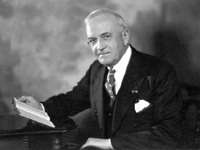
Joseph Mills Hanson, noted author and military historian, was born in Yankton, Dakota Territory July 20, 1876, an only son of Dakota Territory pioneer, Joseph Randall Hanson, and Annie Marie Gertrude Mills Hanson. Joseph received his education in the Yankton schools. He completed eighth grade in 1888, at Chauncey-Hall Academy in Boston. From 1890-1893, Joseph continued his education at the Yankton College Preparatory Academy. Fascinated in all things military, at great sacrifice and expense, his parents allowed him to finish his education at the St. John's Military Academy in Manlius, New York, graduating in 1897 with the rank of First Sergeant.During his last year at St. John's, Joseph was a member of the editing staff of the school newsletter, The Wind Mill, which a few years later accepted some of his stories for publication.
Home from St. John's after graduation, Joseph helped run the family farm, Prospect Place, located two miles outside of Yankton. Joseph began in earnest pursuing a writing career and with the editing assistance of his mother, submitted many articles for publications to newspapers and periodicals. Unable to earn a sustainable living from his writing and with the family in need of financial support, Joseph sought work outside of Yankton. With the influence of his Uncle Abe Mills, a Vice President with Otis Elevator in New York, Mr. Comstock of Otis hired Joseph as a salesman for the Chicago office in March 1900. Shortly upon arriving in Chicago, the company transferred him to the St. Louis office, where he worked until December 1908. He declined a promotion, which would have sent him to Oklahoma, to return to Yankton.
During the eight years Joseph lived in St. Louis, he continued his writing efforts submitting poetry, articles, and stories to national magazines and the local St. Louis newspapers, receiving as many rejections as acceptances. He was a contributor to the Missouri Historical Society Magazine. He began researching and writing his first book, The Conquest of the Missouri, a non-fiction work about steamboating, centering on the life of Captain Grant Marsh, which McClurg & Co. published in 1909. Joseph was witness to the building and completion of the St. Louis World's Fair and it was at the fair that he met his first wife, Frances Johnson of Holden, Missouri. After their marriage, Joseph and Frances lived at Prospect Place. Due to the demands of farming, Joseph could only continue his writing during the winter months.
 In 1916, the SD National Guard called him for active duty in San Benito, Texas where he served as captain with Company M 4th Infantry. Deactivated but later reactivated in 1917, Joseph served with the 147th AEF, Captain-Adjutant 2nd Battalion, in France during WW1 where he was placed on the writing staff of the Stars and Stripes as first officer in charge of Historical Sub-Section. After the war, Joseph remained in Europe as special writer for the Stars and Stripes to write the History of the American Combat Division. He also spent time researching the history of the countryside along the Marne River, which resulted later in publication of a book, The Marne, Historic and Picturesque. During his time in Europe after WWI, Joseph represented GHQ at the organization convention of the American Legion in Paris, March 1919. With the AEF Press Special, he visited many of the battlefields of France and Belgium. He witnessed the Inter-allied Games in June 1919 and published a history of the games entitled History of the Inter-Allied Games Pershing Stadium, 1919.
In 1916, the SD National Guard called him for active duty in San Benito, Texas where he served as captain with Company M 4th Infantry. Deactivated but later reactivated in 1917, Joseph served with the 147th AEF, Captain-Adjutant 2nd Battalion, in France during WW1 where he was placed on the writing staff of the Stars and Stripes as first officer in charge of Historical Sub-Section. After the war, Joseph remained in Europe as special writer for the Stars and Stripes to write the History of the American Combat Division. He also spent time researching the history of the countryside along the Marne River, which resulted later in publication of a book, The Marne, Historic and Picturesque. During his time in Europe after WWI, Joseph represented GHQ at the organization convention of the American Legion in Paris, March 1919. With the AEF Press Special, he visited many of the battlefields of France and Belgium. He witnessed the Inter-allied Games in June 1919 and published a history of the games entitled History of the Inter-Allied Games Pershing Stadium, 1919.
Returning to the US late in 1919, his mother joined him in Washington D.C. where he spent almost one year writing for General Pershing's staff for The Home Sector and The Independence. Officially discharged from active duty, in 1920, he was promoted to Major of the Field Artillery Reserve. Late in 1920, he and his mother returned home to reside at Prospect Place where he resumed farming and his writing career. A year following his mother's death, in 1924, Joseph returned again to France and remained for seven months conducting extensive research for his book on SD in the World War.
In later years, deriving from his enthusiasm and expertise in military history, especially Civil War history, the National Park Service hired Joseph as Historical Assistant. He compiled maps for battles at Petersburg, Antietam, Kennesaw Mountain, and Richmond. He had a short stint as archeologist at Jamestown, from which he believed himself unqualified. His final assignment with the National Park Service placed him as first superintendent of the newly established Manassas Battlefield Park in Virginia where he was instrumental in researching, mapping and designating historical signage and landmarks throughout the park.
In 1935, Joseph, along with 3 other Civil War enthusiasts from Manassas formed a group calling themselves the Battlefield Crackpates. In 1952, the group formally organized and expanded into the Civil War Roundtable of Washington D.C. Joseph was one of 18 as a founding member. The Roundtable promotes the preservation of Civil War historical fields and landmarks. Joseph and the members of the Roundtable actively lobbied and successfully prevented the federal government from building part of the interstate highway through the Manassas Battlefield. In 1957, Joseph received the Roundtable's Gold Medal Award for distinguished achievement in Civil War history. One of the original Crackpates, artist Garnet Jex, painted Joseph's portrait for the National Park Service at the Manassas Battlefield Park. In 1953, Joseph's last book, Bull Run Remembers, was published, compiled from his extensive research for the Manassas Battlefield Park. Joseph retired from the National Park Service in December 1947 and lived with his second wife, Rosamond, in Manassas until his death on February 11, 1960. He is buried next to his parents in the Yankton Cemetery.
In 1924, Joseph arranged for publication of a short work The Love Undending, a tribute to his parents. It contains poetry written by JR, Annie and Joe and excerpts of a few letters exchanged between parents and son. Other books to his credit include young readers' books such as With Sully into the Sioux Land, and The Trail to El Dorado. Besides Bull Run his non-fiction military works include Pilot Knob, the Thermopylae of the West, The World War Through Stereoscope and most notably South Dakota in the World War, 1917-1919. The South Dakota Historical Society commissioned the latter book, with funding appropriated by the State Legislature.
Pickler Family Papers
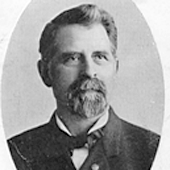 Maj. John A. Pickler |
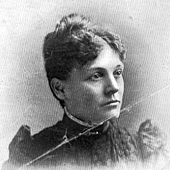 Alice Pickler |
Pickler Suffrage Collection Online -- South Dakota Digital Archives
Finding Aid -- South Dakota Digital Archives
The Pickler Family Papers (1865-1976) document the activities and interests (social, financial, and political) of the John and Alice Pickler family. The Pickler's traveled to Dakota Territory in 1882 and settled in Faulkton. Items in the collection include: photographs, scrapbook clippings, brochures, pamphlets, real estate transactions, legal papers, business correspondence, and Civil War pension materials.
The collection also includes organizational records of various groups the family belonged to including: Women's Relief Corps of the G.A.R., Women's Christian Temperance Union (WCTU), and the South Dakota Equal Suffrage Association (ESA).
Scrapbooks, Clippings, Pamphlets, et al.
Elizabeth "Bachelor Bess" Corey Collection
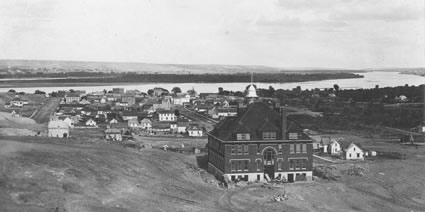
View of Fort Pierre, with the Missouri River in the background, 1909.
Elizabeth "Bachelor Bess" Corey Correspondence on the South Dakota Digital Archives
Elizabeth Corey moved from Marne, Iowa, to South Dakota in 1909. She was young, single, and never married, but she successfully homesteaded in an area where many others failed.
This collection comprises some 180 letters from Corey to her family. The letters detail her day to day experiences from the ten year period following 1909 on or near her homestead west of Fort Pierre along the Bad River.
The letters are long, chatty, and occasionally complaining, but testify to her determination to “prove up†on her claim. By working as a school teacher each winter and occasionally working during the summers as a cook or house cleaner, Corey was able to earn enough money to finance needed improvements on her claim, including a house and barn, a cistern and dam, fencing, cattle, a team of horses, and small cash crops.
The process of capital accumulation was slow and very frustrating for her as she was often deeply in debt, but she eventually “proved up.†By 1919, the 160 acres claim was hers, and she had filed for an additional 40 acres and hoped to buy her brother's quarter section as well.
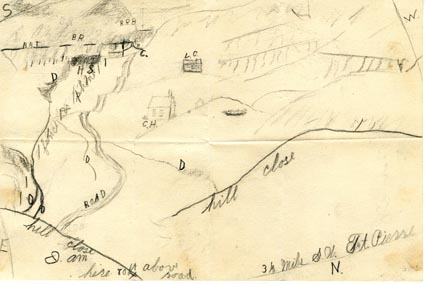
Elizabeth drew this map in her October 2, 1910 letter which included her location, "I am here," at bottom left. Other identified items include the Bad River "B.R.," railroad track "R.R.T.," and railroad bridge "R.R.B," in the upper left corner. The school house "C.H." is located at the center of the drawing. A road and various hills were also drawn in the letter.
Robert F. Kerr Collection
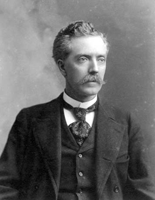
Robert Floyd Kerr was born 12 April 1850 in Sugar Grove, Indiana, to Andrew Jackson and Nancy Sayers Kerr. Kerr attended De Paul University from 1872 to 1877, during which time he met and became good friends with Samuel H. Elrod. After graduating from De Paul, Kerr held a position as county superintendent of schools for one school year. In 1879 and 1880, he spent eighteen months teaching math and English in Hirosaki, Japan. After returning to the United States, Kerr spent 1881 through 1882 working as a civil engineer with a railroad survey crew in Ohio, Indiana, and Illinois. From 1882 to 1885, he was assistant principal with the public schools in Blair, Nebraska.
Kerr came to Brookings, Dakota Territory, in 1885 as principal of the preparatory department of the Agricultural College (now South Dakota State University). He also held a chair in political science and history. In 1891, he left the college and pursued several interests, including traveling in Europe, working for a publishing house, and serving as superintendent of schools for Brookings County. Returning to the college in 1899, Kerr served as principal of the preparatory department and as librarian until 1905.
Always a staunch Republican and active in politics, Kerr was appointed private secretary to Governor Samuel H. Elrod, serving his old friend in this capacity from 1905 to 1907. Kerr apparently had considerable political influence and was highly respected, but his association with Governor Elrod put him in the stalwart camp, which was swept from power by the Crawford insurgents in the 1906 election. After this two year leave of absence from the college, Kerr did not return to school work. Instead, he and twenty other business and professional men in Brookings formed a company and took over a local farm paper. By the spring of 1908, they were publishing a monthly paper with Kerr as editor. By October of the same year, the Minnesota and Dakota Farmer was coming out twice a month and subscriptions had doubled. As editor, Kerr attempted to make the paper current, seasonally topical, and practical. In November of 1910, the paper was sold to the Orange Judd Company and the name changed to Northwest Farmstead.
In November the 1910 election, Kerr was elected as a representative to the state legislature, where his major efforts were spent in the area of farm legislation. In 1912, he was reelected as an independent. During this period of insurgent Republicanism, he may have found it more expedient to run as an independent than as a stalwart Republican.
Throughout his life, Kerr was involved in numerous projects and business ventures: he was president of the State Historical Society, Brookings manager of the Chautauqua, author of Block Map and Manual of South Dakota, a real estate agent, and a founder of secretary of the Brookings Building and Loan Association. In addition, he had interests in gold mines and various other companies. He was also active in the Methodist Episcopal Church and the Masonic Lodge. Robert F. Kerr died on October 16, 1921 in Brookings.
Charles E. Deland Collection
Charles Edmund Deland, attorney, author, and poet came to reside in Pierre in the early 1880s. He was born in Kirkland township, Oneida County, New York on January 6, 1854. After graduating from Whitetown Seminary, Deland moved to Illinois where he was admitted to practice law in 1878.
Deland began his law practice in Pierre in 1883. He would later become partners with Coe I. Crawford. He was the author of several law journals, wrote several books based on historical facts of the west, along with a number of fictional novels.
Deland also belonged to a number of civic and social organizations while living in Pierre. He was at one time president of the State Historical Society, reporter for the Supreme Court, and city attorney. Deland never married. Deland died in Pierre on December 9, 1935 and is buried in DeanBora, NY. He was 81 and had maintained his practice until his death.
Several writings of Deland's are included in his collection. Including histories of the Pierre area, Missouri River navigation, various South Dakota history topics, and a number of speeches, articles, and poems.
Steve Cihak, WWII Letters
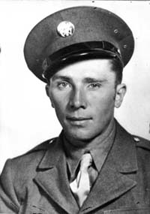
From September 9, 1942 to November 11, 1945 Steve A. Cihak of Tripp mailed 552 letters to his sweetheart Mary I. Paul. The journal article covers Steve's World War II correspondence during his eight months in basic training in the United States. The correspondence includes hand written letters, typewritten letters, v-mail and air mail, postcards, and Western Union Telegrams.
Remington Schuyler Collection
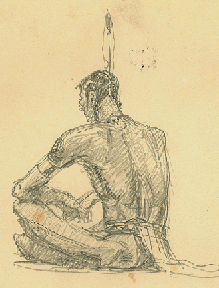
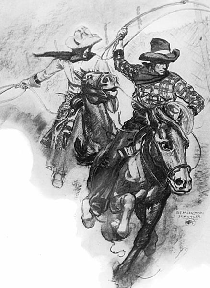
Remington Schuyler was an internationally known artist and writer who incorporated western themes, including: Native American, cowboys, and ranch life into his artwork. This collection is a compilation of his personal files including artwork, and various research notes held at the South Dakota State Archives.
H87-030H87-031
H87-032
H87-033
H87-034
Finding Aid at SD Digital Archives
SDSHS Press BookRemington Schuyler's West
